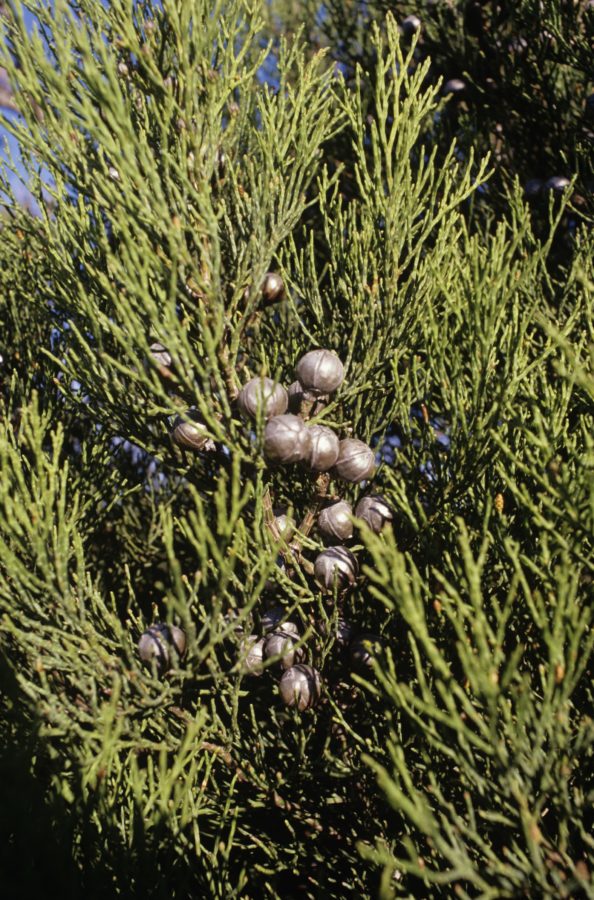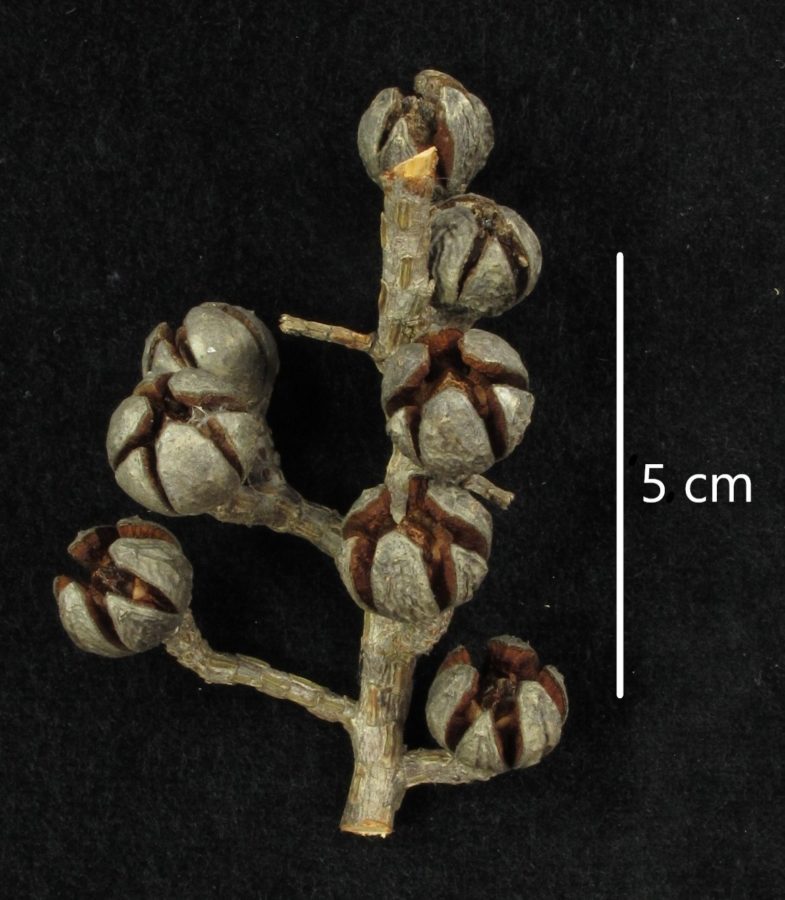Cupressaceae
Callitris drummondii
A small tree or shrub endemic to the southern coastal areas of Western Australia. Habitat fragmentation, indirect effects of introduced diseases and increasing fire frequencies pose potential threats.
Human Uses
Several Callitris species, including C. drummondii have potential as natural sources of deoxypodophyllotoxin, a precursor of a drug used in cancer treatment (Renouard et al. 2015).
References and further reading
- McCraw, L. 2007. Callitris in the woodlands and shrublands of southern Western Australia: ancient landscapes, contemporary issues. 'Growing forest values', Australian and New Zealand Institute of Forestry (ANZIF) Conference, 3-7 June 2007, Coffs Harbour.
- Piggin J, Bruhl JJ. 2010. Phylogeny reconstruction of Callitris Vent. (Cupressaceae) and its allies leads to inclusion of Actinostrobus within Callitris. Australian Systematic Botany 23: 69–93.
- Renouard, S., Corbin, C., Colas, C., Fidel, T., Lopez, T., Leclerc, E.A., Hendrawati, O., Falguières, A., Doussot, J., Ferroud, C. and Maunit, B., 2015. Aerial parts of Callitris species as a rich source of deoxypodophyllotoxin. Industrial Crops and Products, 63, pp.53-57.
- Thomas, P. 2013. Callitris drummondii. The IUCN Red List of Threatened Species 2013: e.T34073A2843177. http://dx.doi.org/10.2305/IUCN.UK.2013-1.RLTS.T34073A2843177.en. Downloaded on 03 August 2017



